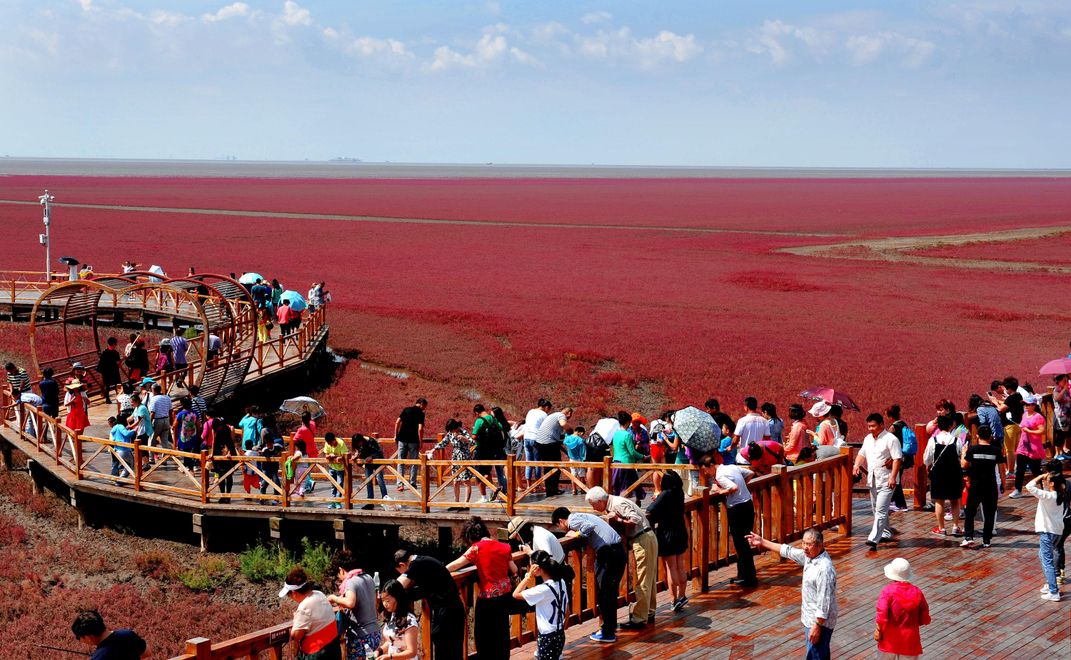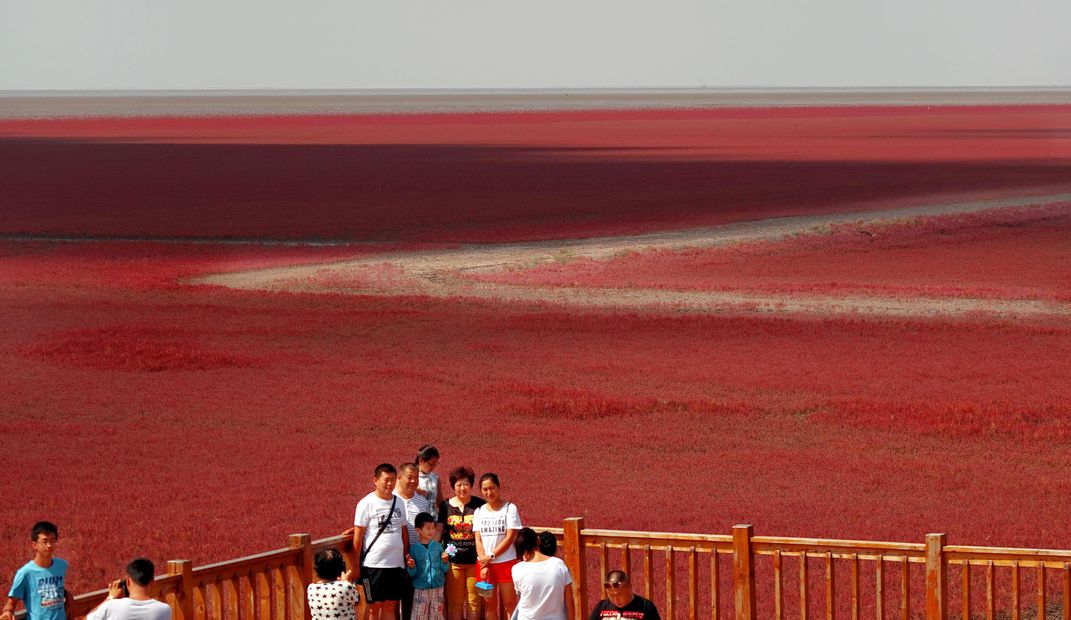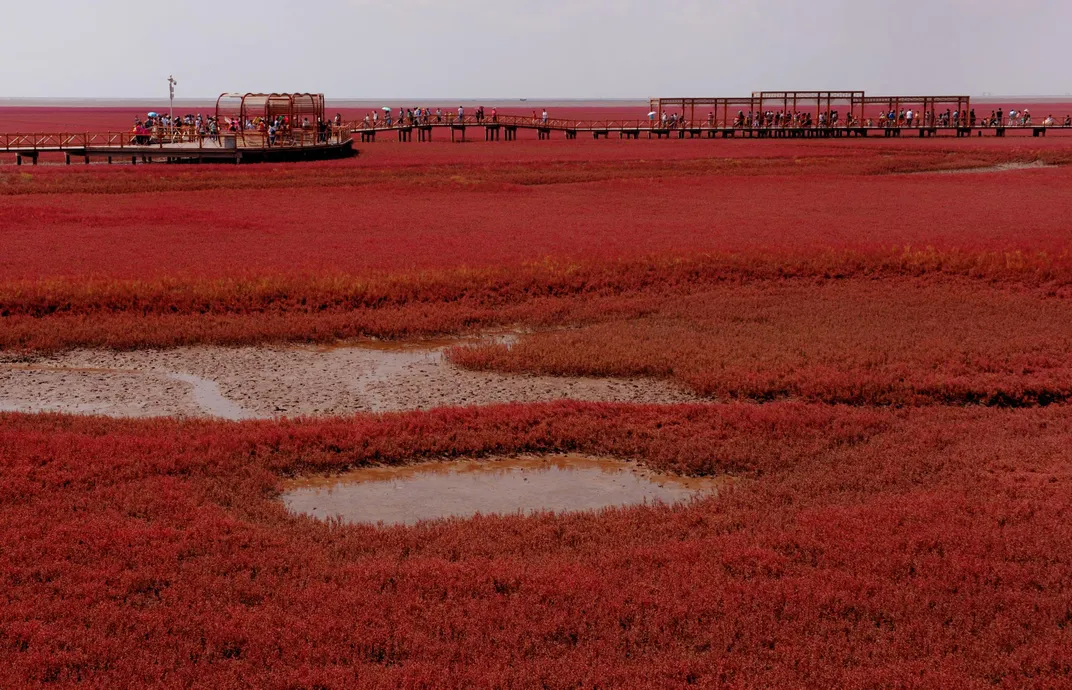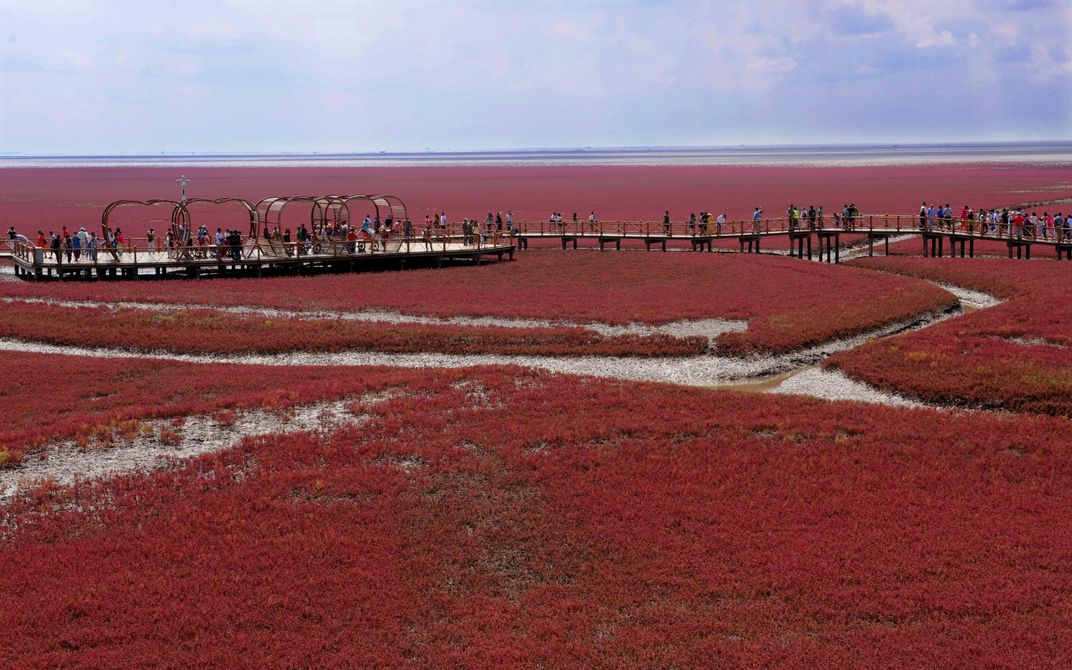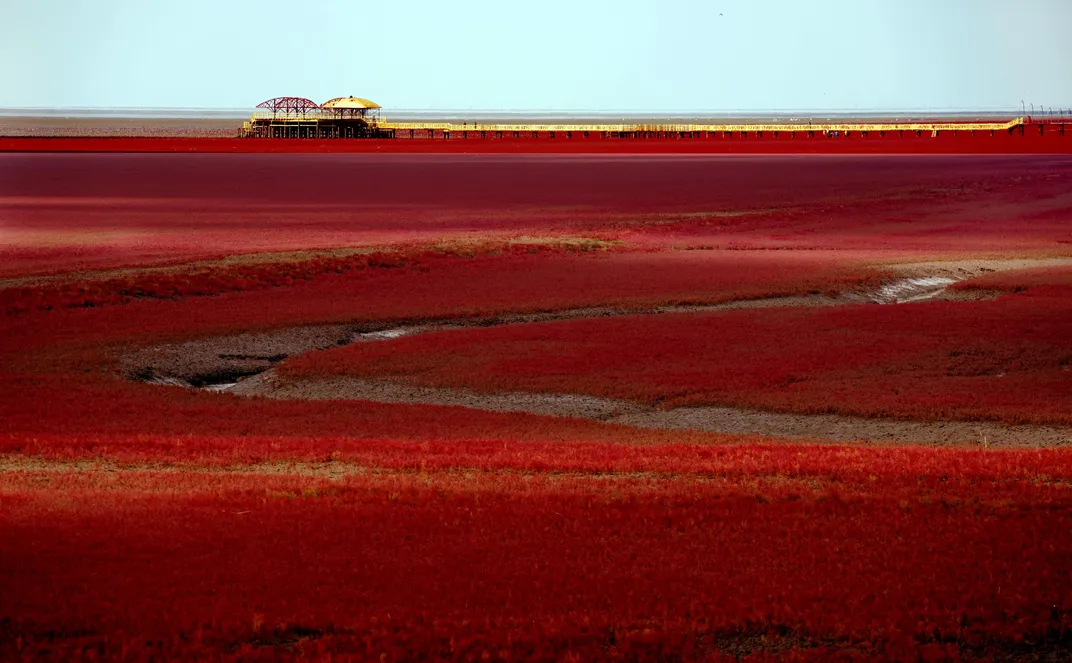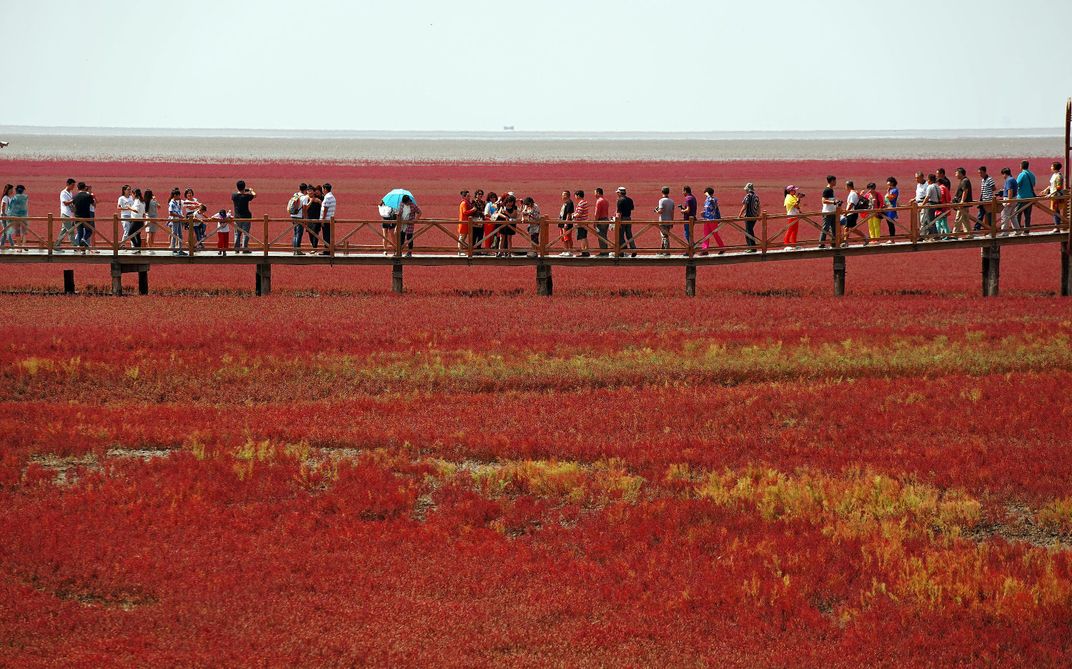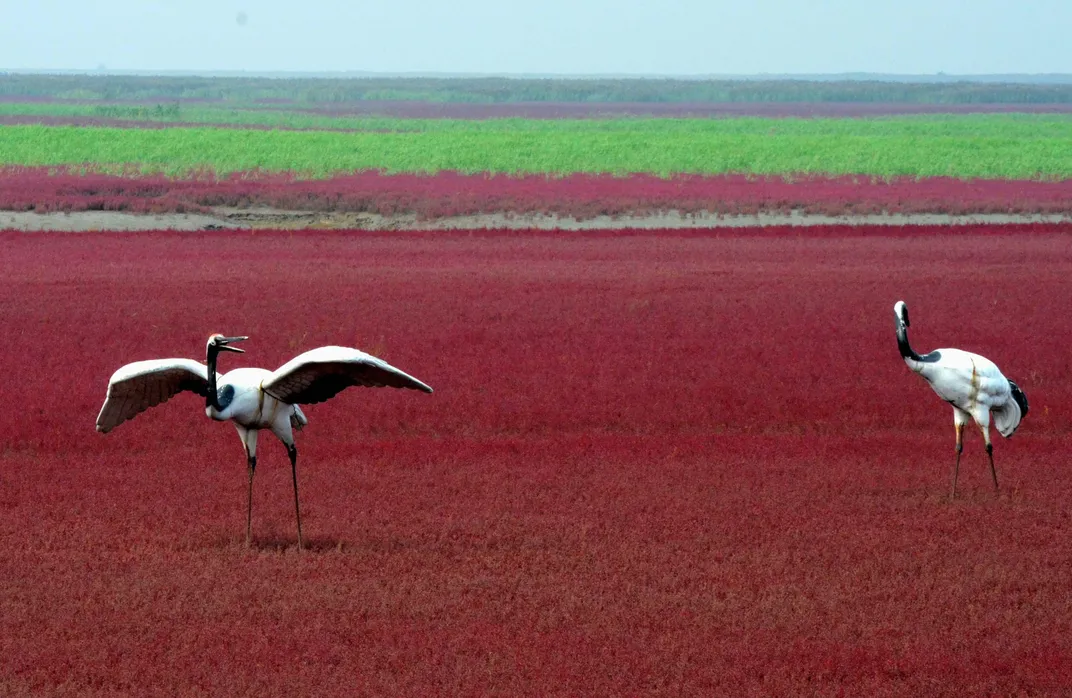Soak In the Color at China’s Crimson Beaches
Panjin Red Beach turns an eye-popping hue every autumn
From the sparkling reflections of the world’s largest salt flats in Bolivia to the giant selenite crystals in Mexico’s Cave of Crystals, there are some places on Earth where nature’s exquisite paintbrush outdoes any Van Gogh or Rembrandt. China’s Panjin Red Beach belongs on that short list of the world’s most visually stunning places, too. Located along the Liaohe River Delta in the Chinese province of Liaoning (about 370 miles east of Beijing), this marshy wetland turns an eye-popping red every autumn.
The Chinese Communist Party’s official newspaper boasts of the region as the world’s “largest and best preserved wetland.” That’s an exaggeration, but there’s still plenty to brag about: Most of the region’s 51 square miles of coastal land is a nature preserve. Visiting tourists can experience these beaches and observe hundreds of birds with the help of a 6,500-foot wooden boardwalk that protrudes into the sea of red — the highlight of the small section of the preserve open to the public.
Location and biology are the key to the wetlands’ dramatic color. Because the beaches sit near the mouth of the Liaohe River (locals call it the “Mother River”) in the salty coastal plain of Liaodong Bay, the soil is very saline and alkaline-tolerant seaweed called seepweed dominates the area. Seepweed itself isn’t rare — it can be found in many coastal regions throughout the United States — but the red beaches’ particular combination of seepweed and alkaline-heavy soil is. What makes Suaeda heteroptera unique is that as it matures and absorbs more and more saltwater, it changes colors. In the spring, it’s green. As the summer progresses, it slowly turns darker. By late August and into early September, the seepweed takes on a deep shade of red. It ripens into a purplish color by October, then wilts and dies off before starting anew.
These crimson beaches attract more than just tourists. Over 260 different species of migratory birds can be found here, many of which use the wetlands as a breeding ground during their annual migration from East Asia to Australia. According to China Scenic Magazine, 20 species found in the wetlands are protected in China, including the endangered red-crowned crane, white stork, whooper swan and the Saunders’s gull. Birds make the beaches part of their itineraries for good reason — with ample fish and plenty of aquatic plants for nesting, they’re the ideal habitat for a variety of animals.
Despite the area’s protected status, Panjin Red Beach is under threat. Oil fields in the wetlands threaten the survival of this unique habitat. In operation since 1970, the Liaohe oil field has become the third largest in China. Pump jacks, or “nodding donkeys,” are now a common sight along the beach. In recent years, though, as noted by China Scenic Magazine, improved technologies and increased sensitivity towards environmental concerns have led to cleaner oil fields.
The best time to visit Panjin Red Beach is in September, when the color is most vibrant and baby chicks are preparing themselves for their fall migration. Train service from Beijing to Panjin takes about four to six hours. According to The Weather Channel, buses and cabs are available to take visitors the last 20 miles between downtown Panjin and Panjin Red Beach. Filled with vibrant color and plenty of life, China’s red beaches truly live up to their reputation as one of nature’s best works of art.
Planning Your Next Trip?
Explore great travel deals
Smithsonian magazine participates in affiliate link advertising programs. If you purchase an item through these links, we receive a commission.

